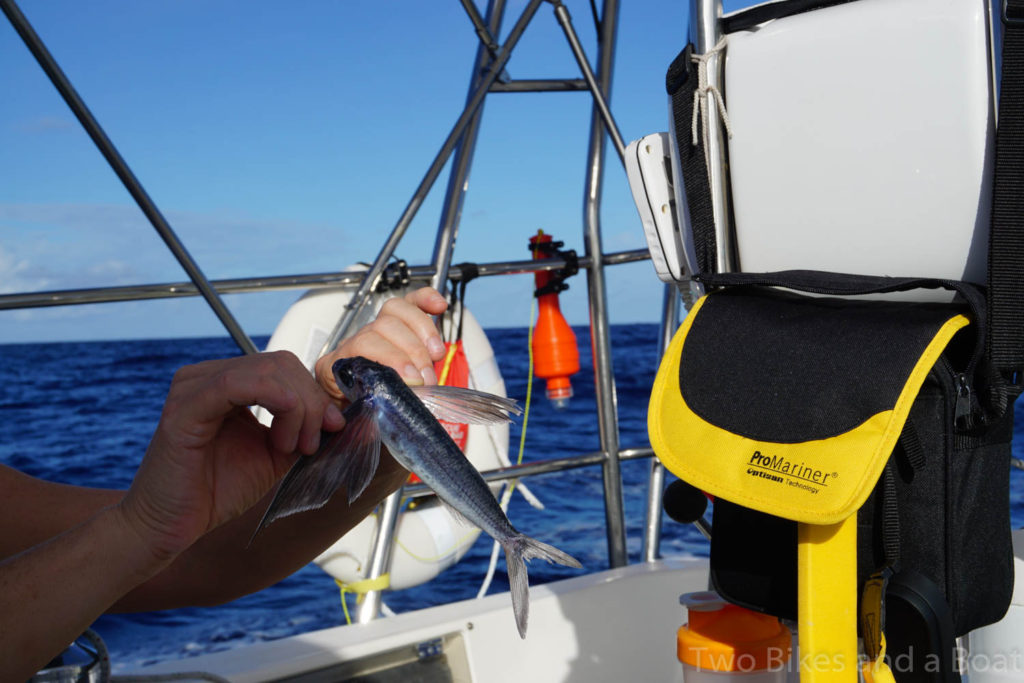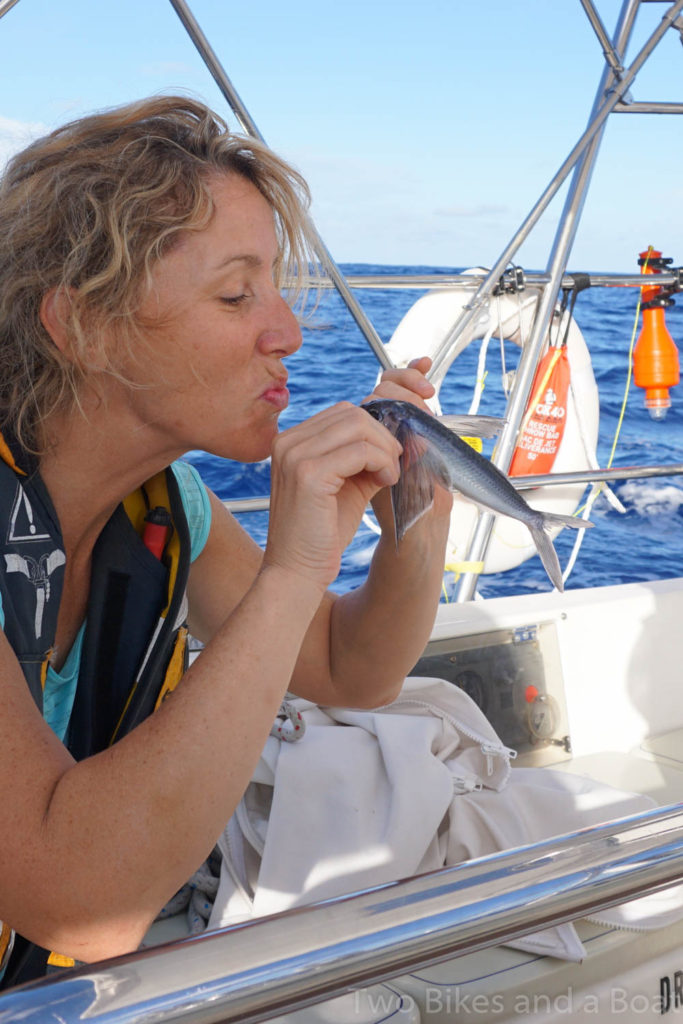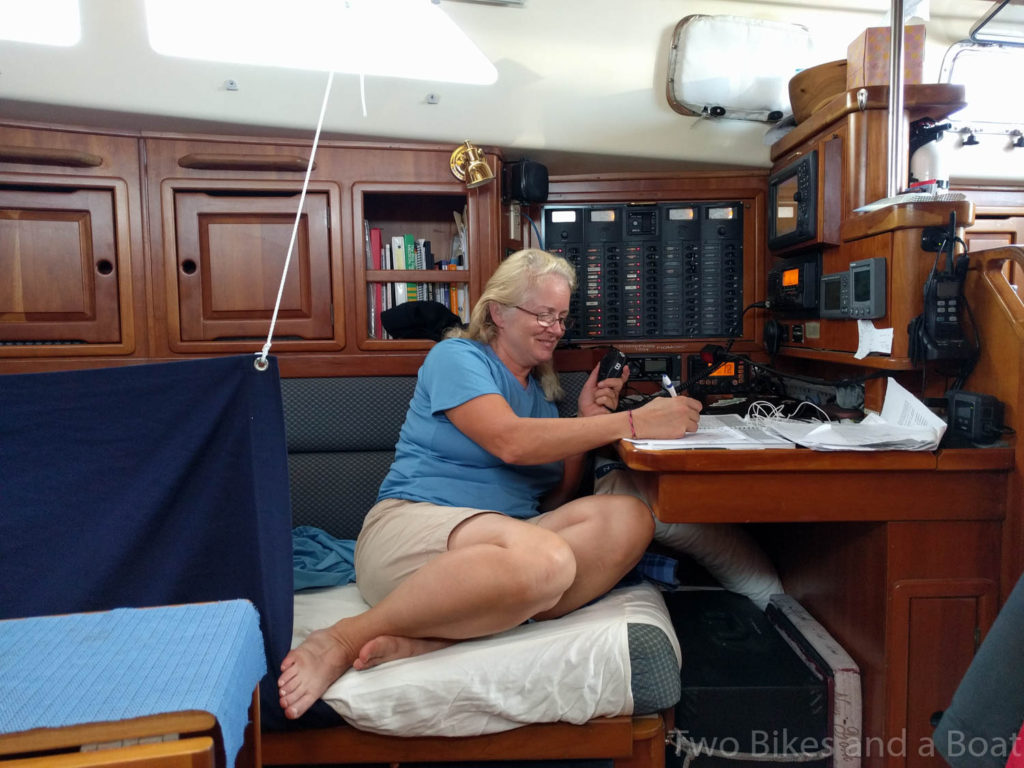On day 7 of our passage to the BVI’s we had a very special visitor, a minke whale! It was a bright sunny day, with winds from behind, both sails up, reasonable waves, and it just happened we were all sitting in the cockpit together (which doesn’t happen that all that often on passages), when I spotted something dark in the water…then it came up and spouted! It could only be a whale!
We all jumped out of our seats in excitement, quickly buckled on our safety harnesses, and watched as a very friendly minke whale proceeded to check us out. He clearly was curious about what he was seeing, as he came alongside and rolled onto his side to take a good look at us. Then he rolled right over and showed us his bright white belly. Was so close I could have tickled his tummy with a boat hook! He was about half our boat’s length, so about 20 feet long, plus or minus a few feet. He played around, diving under the boat and coming up on the other side repeatedly, passing right under Matthew and Paul’s feet as they stood on the bowsprit. He hung around for a good 15 minutes and gave us the show of a lifetime – it was so amazing, the photos don’t do it justice, but here they are anyway. It was definitely the highlight of the passage!
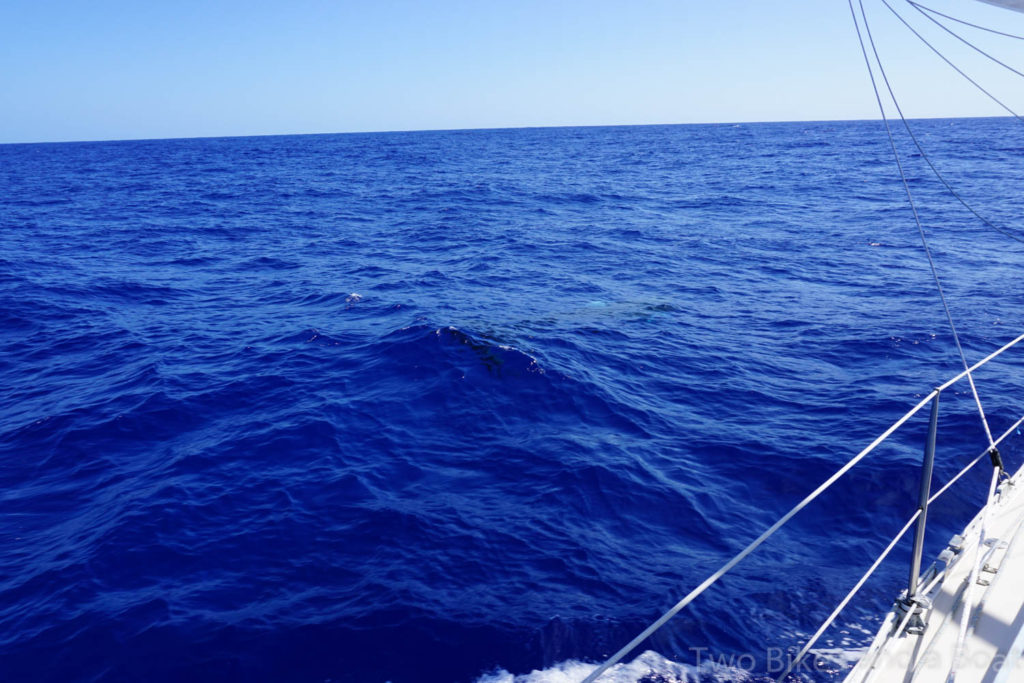
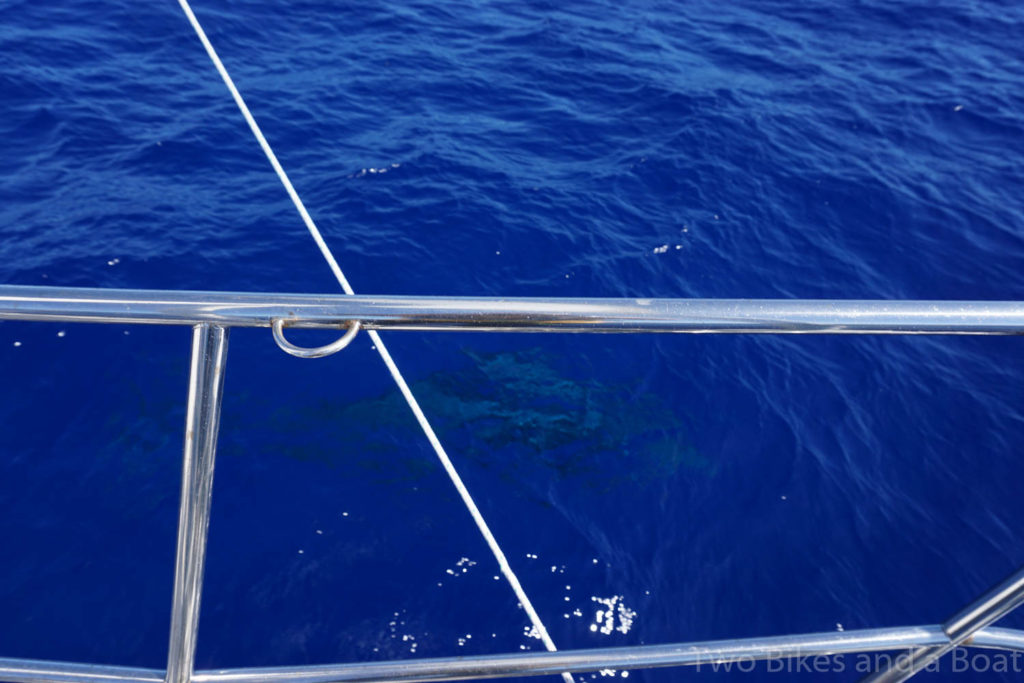
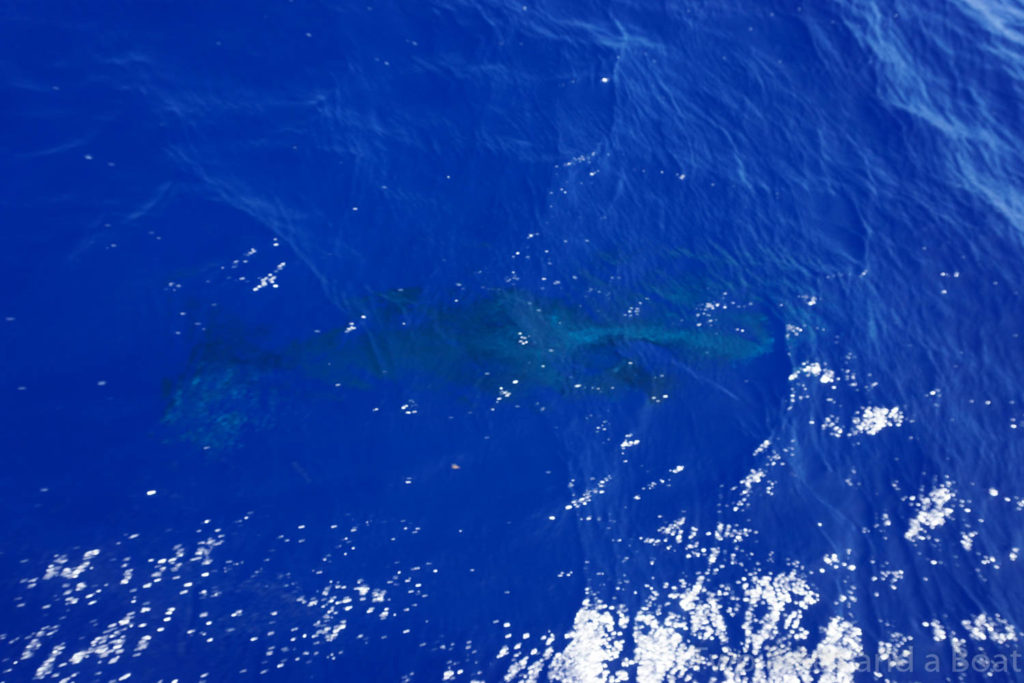
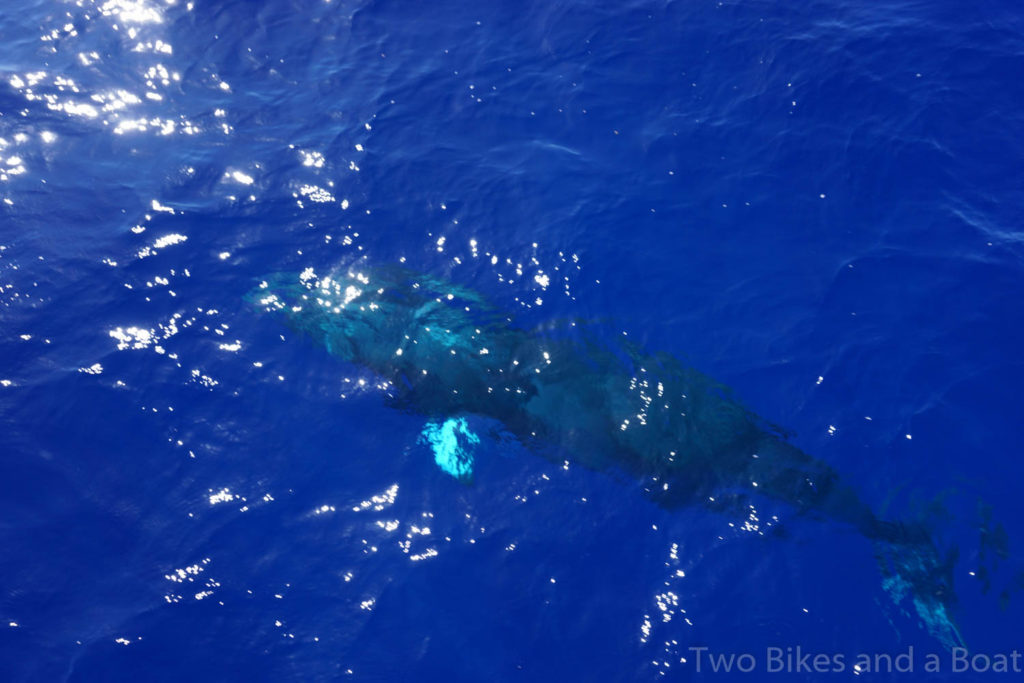
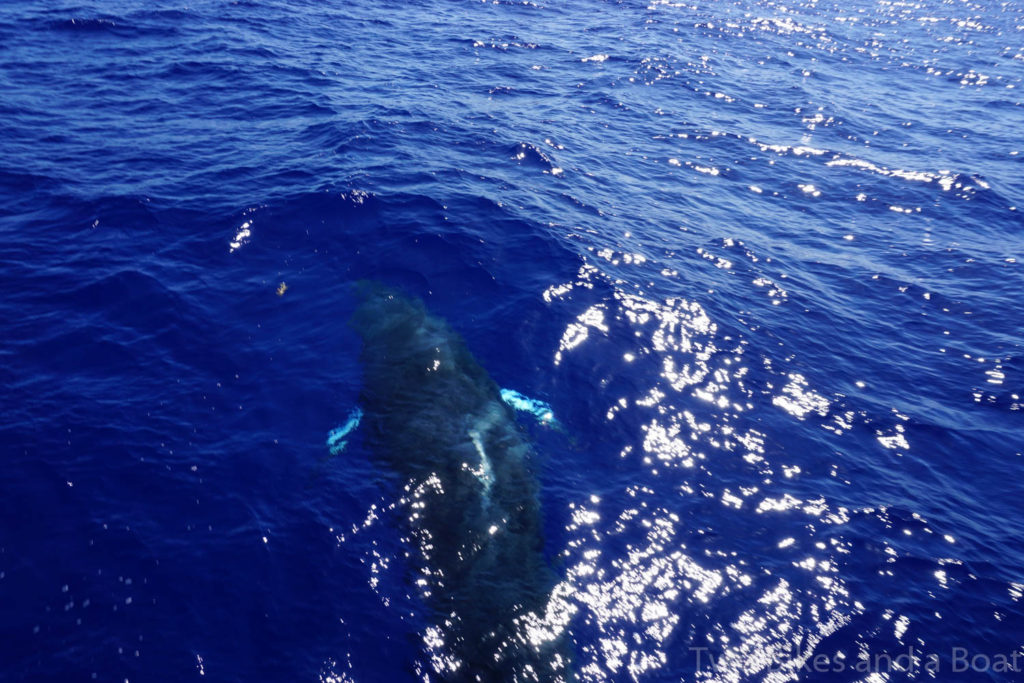
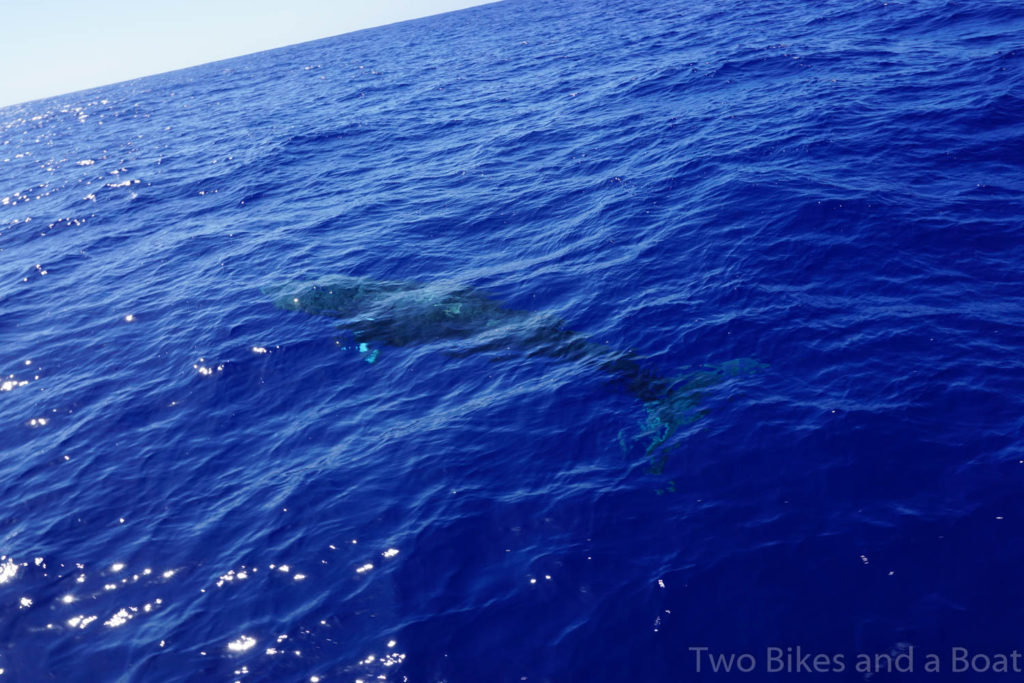
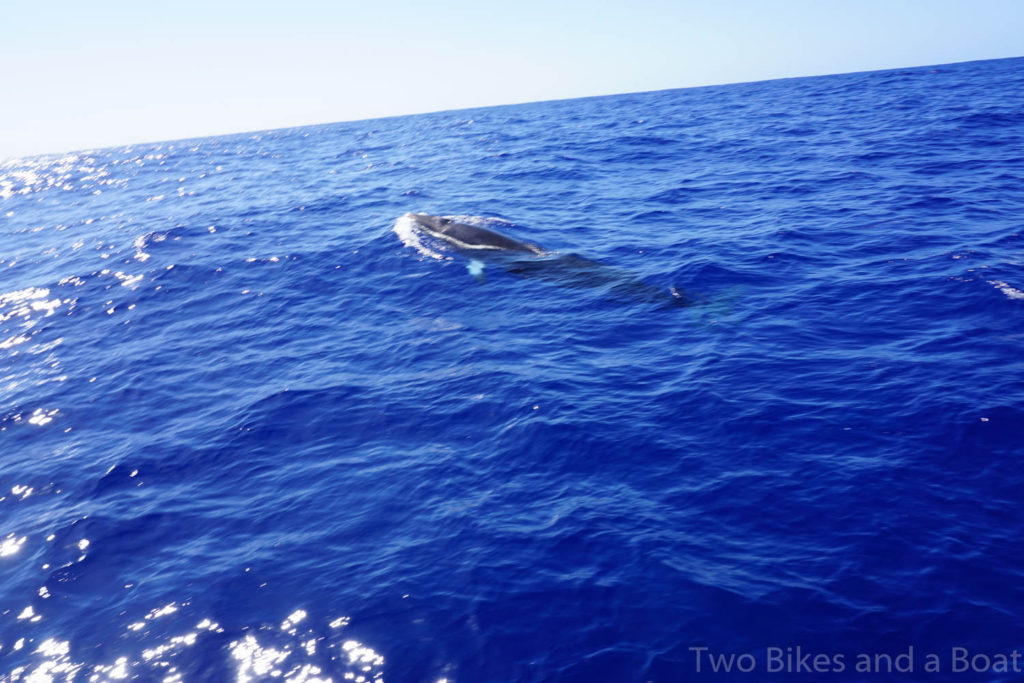
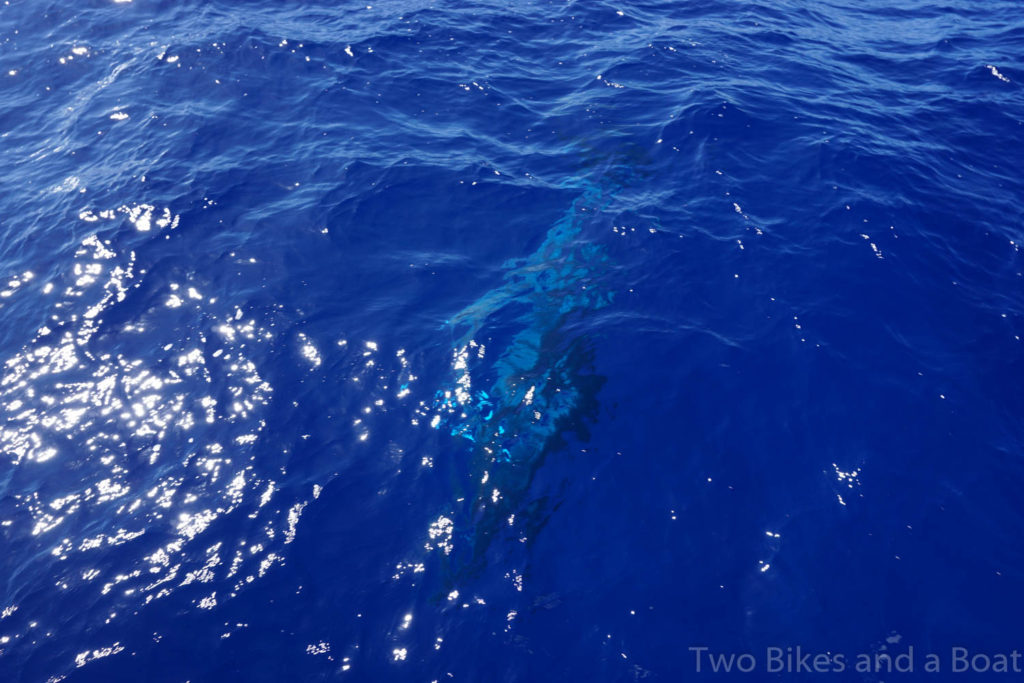
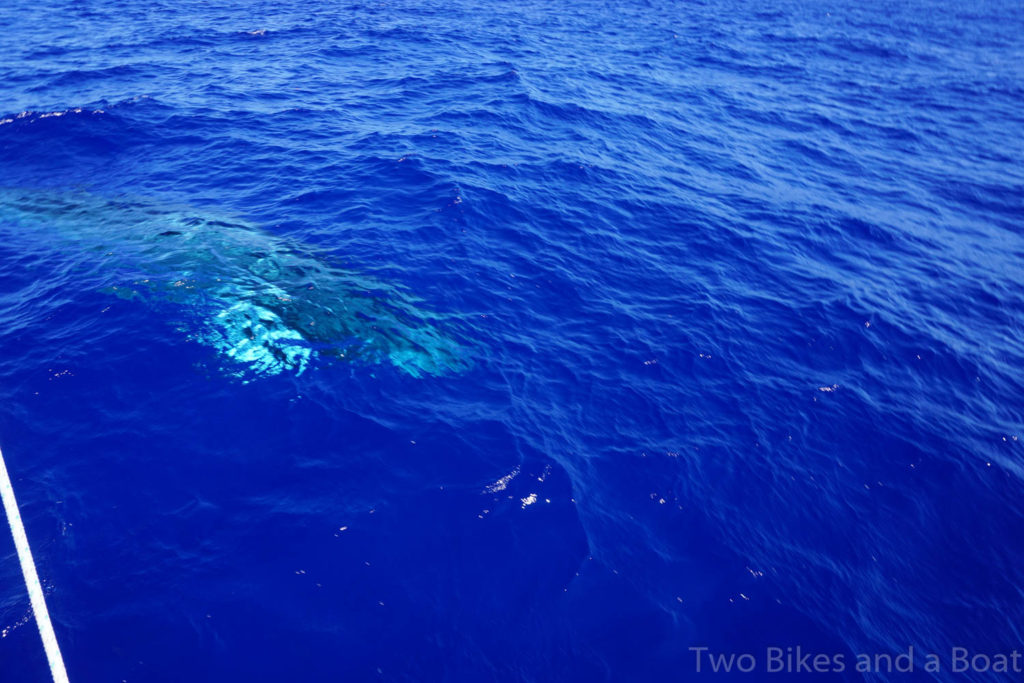
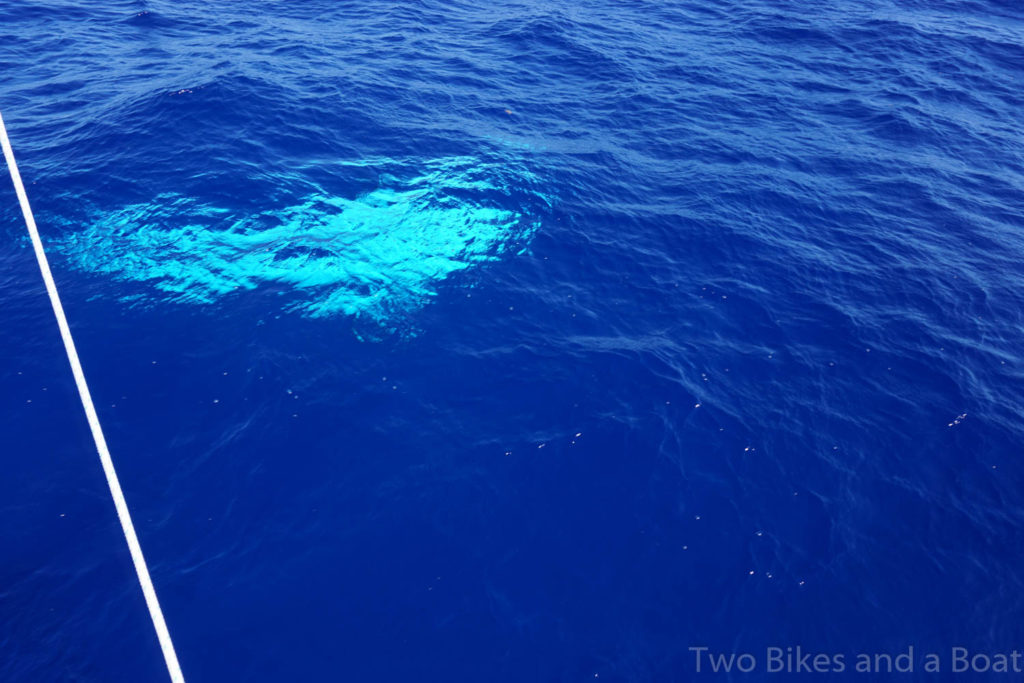
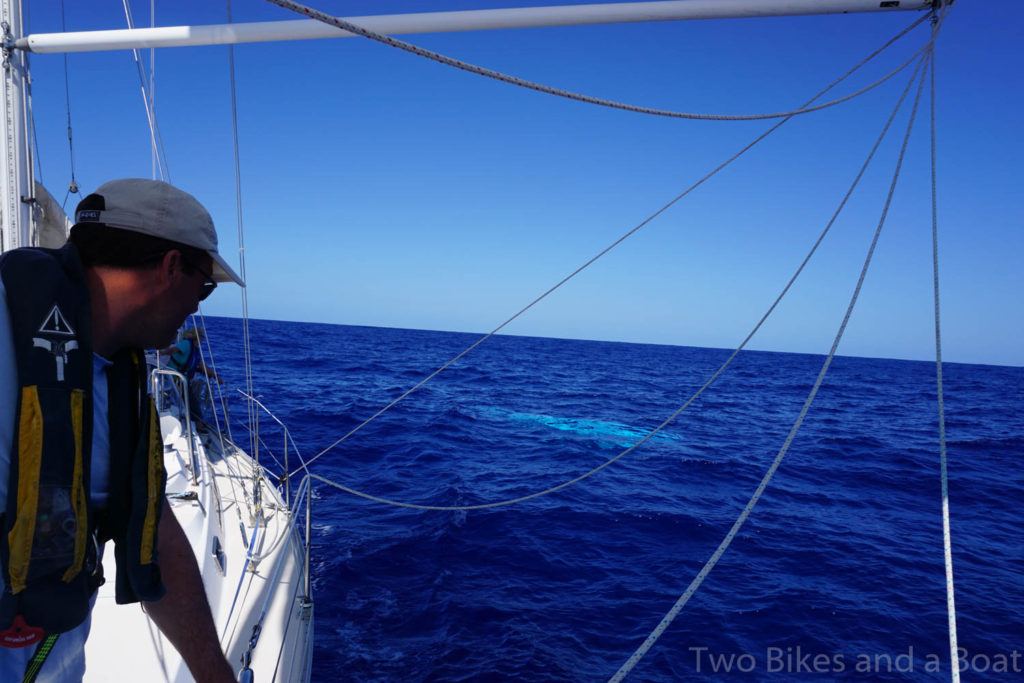
Here is a bit of info on the minke whale (from Wikipedia)
Minke whale (Balaenoptera acutorostrata).
The minke whales are the second smallest baleen whale; only the
pygmy right whale is smaller. Upon reaching sexual maturity (6–8 years of age), males measure an average of 6.9 m (23 ft) and females 8 m (26 ft) in length, respectively. Both sexes typically weigh 4–5 t (3.9–4.9 long tons; 4.4–5.5 short tons) at sexual maturity, and the maximum weight may be as much as 10 t (9.8 long tons; 11 short tons).
The minke whale is a black/gray/purple color. Common minke whales (Northern Hemisphere variety) are distinguished from other whales by a white band on each flipper. The body is usually black or dark-gray above and white underneath. Minke whales have between 240 and 360 baleen plates on each side of their mouths. Most of the length of the back, including dorsal fin and blowholes, appears at once when the whale surfaces to breathe.
Minke whales typically live for 30–50 years; in some cases they may live for up to 60 years.
The brains of minke whales have around 12.8 billion neocortical neurons and 98.2 billion neocortical glia.[11]
The whale breathes three to five times at short intervals before ‘deep-diving’ for two to 20 minutes. Deep dives are preceded by a pronounced arching of the back. The maximum swimming speed of minkes has been estimated at 38 km/h (24 mph).

